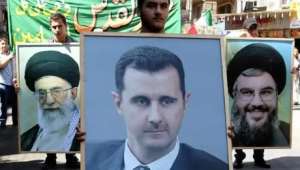
In the often unpredictable theater of international relations, alliances are rarely eternal. Some flourish, some fracture, and some, like the historic relationship between Iran and Israel, transform dramatically—shaped by ideology, revolution, and changing national interests. Their journey from strategic collaborators to bitter foes tells a story not only of geopolitical realignment but of how internal revolutions can redraw the global map.
The Strategic Embrace: A Quiet Alliance (1950s–1979)
In the decades following World War II, Iran under Shah Mohammad Reza Pahlavi emerged as a pro-Western power eager to modernize and secure influence in a volatile Middle East. At the same time, Israel sought partners beyond its hostile neighbors. Despite being a predominantly Muslim nation, Iran became one of Israel’s closest regional collaborators.
Diplomacy between the two nations was discreet but impactful. Iran became the second Muslim-majority country to recognize Israel, and the collaboration grew from there. Israel provided military technology and training, while Iran offered access to its vast oil reserves. One of the most significant examples was the creation of the Eilat-Ashkelon Pipeline in 1968—an underground lifeline that kept Israeli refineries powered well into the 1970s.
They went even further. In 1977, under the veil of secrecy, Iran and Israel launched Project Flower—a bold military pact to jointly develop surface-to-surface missiles. Israel contributed the technological expertise; Iran financed the project. Simultaneously, cultural and academic exchanges flourished, with Iranian students studying in Tel Aviv and Israeli specialists sharing agricultural and medical innovations in Tehran. Israel, in essence, served as Iran’s unofficial gateway to the West.
It was an era of pragmatic diplomacy—two nations not bound by shared values, but by mutual interest and strategic need.
1979: The Year That Shattered the Pact
Everything changed with the Islamic Revolution. Led by Ayatollah Ruhollah Khomeini, the revolution overthrew the Shah and dismantled the secular monarchy. What emerged in its place was a theocratic republic deeply hostile to the West—and even more hostile to Israel, which it branded “the Little Satan.”
Iran’s foreign policy was turned on its head. The collaboration with Israel was not merely cut—it was condemned. Support shifted to groups like Hezbollah and Hamas. A nation that once funneled oil and intelligence to Tel Aviv now championed its enemies. This transformation was driven not only by ideology but by a calculated bid to reshape Iran’s national identity: from Western partner to Islamic stronghold.
The revolution’s success lay in its ability to rally a cross-section of Iranians disillusioned with authoritarianism, economic disparity, and cultural alienation. The Shah’s rapid modernization had left many behind. SAVAK’s repression had stifled dissent. And the regime’s coziness with Israel became a lightning rod for clerical critique. The ties that once strengthened Iran became a symbol of betrayal in the eyes of the revolutionaries.
The Fallout: From Silent Partners to Open Enemies
The dissolution of Iran-Israel relations didn’t happen in a vacuum. It echoed other broken alliances in world history—Egypt’s pivot away from the Soviet Union in the 1970s, Italy’s side-switching in World War I, and even Ghana’s own interrupted ties with Israel during the rise of Pan-African solidarity movements.
In Iran and Israel’s case, the bitterness was more intense precisely because of how close the relationship had once been. Intelligence partnerships were replaced with espionage. Joint weapons development gave way to cyberattacks, sabotage, and targeted assassinations. Proxy confrontations in Lebanon, Syria, and Gaza made the rivalry transnational and entrenched.
But beneath the official hostility, traces of former ties flicker. Iranian youth, connected to global networks and disillusioned with clerical rule, express muted admiration for Israel’s innovation and resilience. Israeli strategic circles, though vocal in their warnings about Iranian aggression, quietly acknowledge the missed opportunities of the past.
The Present Tense: What Drives Division Today
Four major factors sustain the hostility:
Nuclear Suspicion: Israel views Iran’s nuclear program as a red line. Iran insists it is peaceful. The gap in trust has fueled shadow warfare and preemptive strikes. Proxy Battlegrounds: Hezbollah in Lebanon, militias in Syria and Iraq, and militant networks in Gaza—these are extensions of Iran’s regional influence and points of conflict with Israel. Regional Realignments: With Israel normalizing relations with Gulf states under the Abraham Accords, Iran sees itself further isolated, deepening its commitment to anti-Israel rhetoric. Internal Politics: Hardliners in Iran use hostility toward Israel as a political tool to rally nationalist and religious sentiment during economic and social unrest.
Looking Ahead: Is Reconciliation Possible?
Short-term reconciliation seems improbable. The ideological divide is too wide, and both governments currently benefit domestically from maintaining the enmity. Yet history teaches that alliances are not always about liking one another—they are often about needing one another.
If Iran experiences political transformation—be it through reform, generational change, or civil evolution—the possibility for pragmatic reengagement may emerge. Shared concerns like climate adaptation, public health, and regional stability could catalyze informal cooperation before official detente.
And if that door ever reopens, it will not be the first time in history that adversaries have found common ground on the far side of a revolution.
Lessons for a Watching World
The Iran-Israel story is more than a case study in geopolitical reversal. It is a reflection of how ideology and identity can both forge and fracture international bonds. It offers valuable insight for emerging states—especially across Africa—on how to balance principled non-alignment with strategic clarity.
Alliances, after all, are only as durable as the foundations they’re built on. When trust is replaced with dogma, and pragmatism with politics, even the most promising partnerships can fall into ruin.
Yet perhaps the ultimate lesson is this: in diplomacy, the bridge that collapses today might still be rebuilt tomorrow—if both sides are willing to reach for the rubble.
Retired Senior Citizen
Teshie-Nungua
[email protected]


